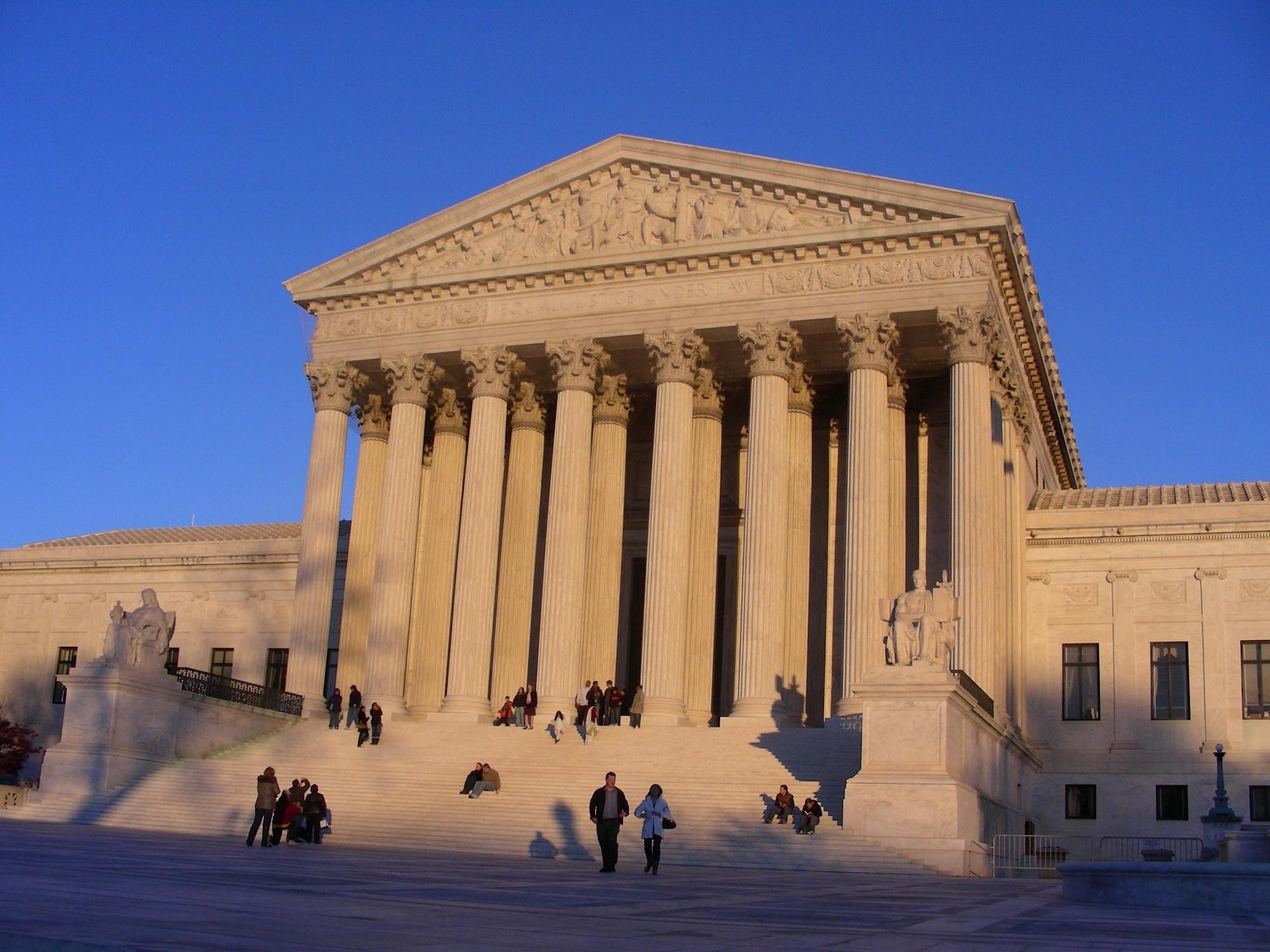Lawsuit Tests the Supreme Court’s ‘Immunity Protection Program’ for Police Officers Who Kill
On May 23, 2013, Khari Illidge, a 25-year-old Black man in Lee County, Alabama, was face down and hogtied, with a 385-pound police officer kneeling on his back, when he suddenly went limp and a mixture of white froth and blood seeped from his mouth. Sheriff’s deputies had confronted Illidge while he was running in […]

On May 23, 2013, Khari Illidge, a 25-year-old Black man in Lee County, Alabama, was face down and hogtied, with a 385-pound police officer kneeling on his back, when he suddenly went limp and a mixture of white froth and blood seeped from his mouth.
Sheriff’s deputies had confronted Illidge while he was running in the street naked, unarmed, and, the deputies agreed, suffering a mental health crisis. When Illidge did not heed commands to stop, the deputies used the electric shock of their Tasers to subdue him. They tased him 19 times, 13 of which came after he was on the ground with two officers on his back. One officer later testified that tasing Illidge on the ground served no purpose other than to inflict pain and shut down his nervous system.
The officers then handcuffed Illidge and shackled his feet behind his back in the hogtie position because he was “thrashing” and making “unintelligible” utterances. Officers called paramedics when they saw the blood in his mouth, and he was pronounced dead soon after.

Illidge’s estate brought a federal civil rights suit against the officers involved in his death, citing Fourth Amendment precedent that police may use force only to serve a legitimate purpose. But both the trial court and court of appeals granted the officers “qualified immunity,” which shields officers from civil liability unless their conduct clearly violates the Constitution.
Last week, the NAACP Legal Defense and Educational Fund (LDF) filed a petition asking the Supreme Court to review the grant of immunity. The case is the latest test of the Court’s role in the nation’s ongoing struggle to hold police accountable for fatal violence, particularly against young African American men. It also highlights a question that has gained urgency among legal commenters and some members of the Court: Will the Supreme Court use its discretion equally to protect victims of police violence as it does to protect the rights of police?
In recent years, the Supreme Court has quietly carved out a special space on its docket to enforce the civil immunity of police officers, going out of its way to ensure that lower courts strictly apply immunity. Law professor Will Baude has called it the Court’s “immunity-protection program.” With Illidge’s petition, the Court can take the same steps to enforce the rights of someone killed by police, or it can allow the lower court’s grant of immunity to stand, and further entrench its role defending officer immunity and undermining police accountability.
For decades, the Supreme Court has favored a strong version of immunity in civil rights cases against police and other government officials, with any immunity case before the Court a nearly foregone conclusion. By one count, the Court has conclusively denied immunity just twice in over 30 opportunities in the last 36 years. The Court’s robust view of qualified immunity has made it harder to sue police officers for violating constitutional rights than for causing injury through ordinary negligence.
But under Chief Justice John Roberts, the Court has deployed an additional tool to protect officers from liability: summary reversal. Ordinarily, the Court takes cases to resolve clear disagreements among the federal appellate courts, or to decide a pressing legal issue of national significance, and then decides after full briefing and oral argument. Not so with official immunity. Instead, the Court has effectively patrolled the lower courts on the issue, looking for mistaken denials of immunity and then summarily reversing them. The Court has done this six times since 2013, including in April of this year. In one case, an officer ignored superior commands and shot at a fleeing car six times from an overpass, killing the driver, rather than allowing the car to hit spike strips in the road. In the most recent case, an officer shot a woman four times while she stood in her front yard with a kitchen knife; it was unclear whether she even knew officers were there.
Justice Sonia Sotomayor has become a vocal critic in dissent. Last year, she called out the Court’s double standard when it declined to review immunity granted to an officer who shot an unarmed man in the back while he walked away from the officer. It is a “disturbing trend,” she wrote, that the Court has “not hesitated to summarily reverse courts for wrongly denying officers the protection of qualified immunity in cases involving the use of force,” yet “rarely intervene[s] where courts wrongly afford officers the benefit of qualified immunity in these same cases.”
In April, when the Court summarily granted immunity in another officer shooting, Justice Sotomayor decried the Court’s “unflinching willingness” to intervene on behalf of police in excessive force cases. The “one-sided approach to qualified immunity,” she wrote, “transforms the doctrine into an absolute shield for law enforcement officers” and “tells officers they can shoot first and think later.”
For the most part, the Court’s majority has not concealed and has in fact defended its zeal to shield officers and prioritize immunity over accountability. An opinion last year explained that “in the last five years, this Court has issued a number of opinions reversing federal courts in qualified immunity cases … because qualified immunity is important to society as a whole.” And in 2015, Justice Samuel Alito wrote that “the Court often corrects lower courts when they wrongly subject individual officers to liability.”
But in response to Justice Sotomayor last year, Justice Alito made a curious denial of what appears to be an obvious a double standard. He said the Court “applies uniform standards in determining whether to grant review in cases involving allegations that a law enforcement officer engaged in unconstitutional conduct,” and challenged Justice Sotomayor to identify “a single case” where a victim of unconstitutional policing raised the same sort of error that has triggered Supreme Court intervention when claimed by police.
Lawyers for Khari Illidge’s estate argue their client’s claims present just such a case.
Whether the Court applies a uniform standard going forward — correcting errors not just to protect police but also victims of police brutality — is not just an academic matter. The small number of cases the Court decides have far-reaching consequences, affecting the relationship between police and communities across the country. Daniel Harawa, assistant counsel at LDF, said the Court’s failure to review Illidge’s death would not only condone the officers’ conduct in his case, but “could cause the public to wonder when, if ever, police officers will be held accountable for their unnecessary use of deadly force.”
